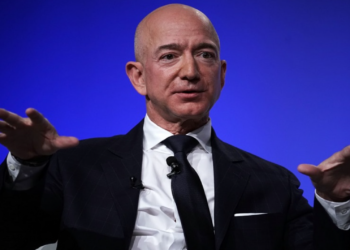Amazon Just raised $10 billion by issuing corporate bonds for “general corporate purpose” so let us talk about bonds.
Amazon can get money in many ways:
1. From savings
2. From the bank
3. From investors
When Amazon wants to borrow from investors it has two options:
a. Equity by Sell shares; investors become part owners of Amazon, no guarantees on return
b. Debt by borrowing cash: investors get guarantee on return, but no ownership
When Amazon wants to borrow cash, without going to a bank it issues a bond. Why not borrow cash? Well because if interest rates become exceptionally low like in the US today, it is cheaper for any organization to simply issue bonds. Amazon was able to borrow $1 billion bond and promise to repay investors just 0.4% in interest every year. The Financial Times reported that this was the lowest interest rate for any bond in US corporate history.
Amazon thus borrowed $10 billion in cash from investors, and in return, Amazon gave the investors an IOU. Then IOU is called a Bond. Amazon also promised to pay interest on the IOUs. The bonds issued earn a fixed Interest payment called coupons. The coupon rates will never change. The coupons rates payable will also increase as the duration of the IOU gets longer. For instance, Amazon will pay 0.8% to borrow for five years but will pay 2.7% to borrow for 40 years.
Bonds are usually sold at a par price, of 100. This means each unit of the bond is valued at inception at N100. However, if Amazon believes that demand for her bonds will be high, she can sell the bonds at a premium thus, the N100 par bond will be offered for sale at N103 i.e. a N3 premium.
The reverse holds, Amazon could offer a discount to investors by selling a N100 par bond at N97, a N3 discount to par. Bonds can also have a call or put option. A call option means Amazon can recall her bonds early before maturity and repay the principal to the investors.
The return on bond is the yield paid divided by the price the bond was bought. Thus, if coupon is $2 and bond was sold for 100, yield is 2%
Investors buy bonds because:
Predictable, Constant returns, Bonds offer a potentially predictable return. Coupon do not increase or decrease over the life of the bond. So, when the economic times are uncertain, bonds do well because the returns via the coupons are constant and known. However important to note that as inflation rises, bonds do badly because those fixed payments lose value.
READ ALSO: U.S regulator invites Banking and Crypto industry leaders for partnership
Safety of Principal: When a company issues debt via bonds it usually places certain collateral toward repayment of the bond or simply issue the bond based on the faith of the company to repay. If the company however fails and is under bankruptcy proceeding, the bondholders are placed above the equity holder to receive back their investment from the business. Thus, the investors who invested in the $10b Amazon bond offer are higher in claims ladder than equity holders. Moody Research report showed rated investment-grade municipal bonds in the US had an average cumulative default rate of just 0.10% between 1970 and 2016.
Thus, many portfolios use bonds to hedge against a fall in stock market process. Stocks and Bonds tend to be negatively correlated, i.e. as stock fall, bonds do better, especially if the fall in equities is caused by economic
Tax Advantages
Certain bonds issued by Sovereigns have tax-exempt status, meaning the coupon returns are not accessed for taxes. FGN, State and Local Government bonds are usually tax-exempt. Corporate bonds do not enjoy this tax privilege, but Amazon can deduct interest expenses it pays to investors from her tax liability, i.e. interest expenses are tax-deductible.

Using the pictorial above let us review the Amazon bond
1. The Maturity date of 2040 tells us this is a 40-year bond.
2. The Coupon means every year Amazon will pay 2.7% as interest to bondholders
3. The Bond is callable
4. The Bond is sold at a $3.250 premium
5. Since bond is callable, Yield to call is also calculated.























